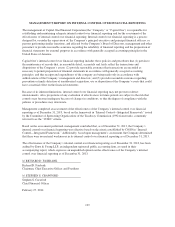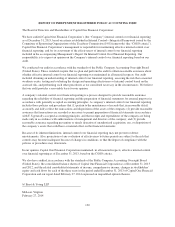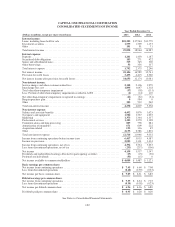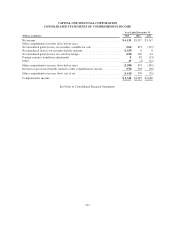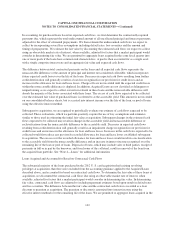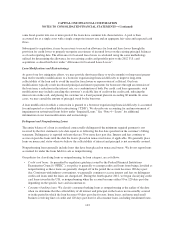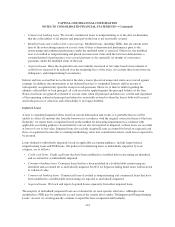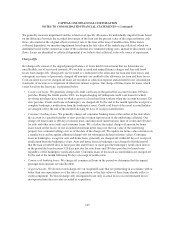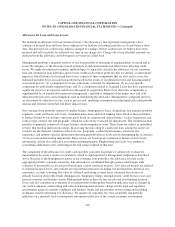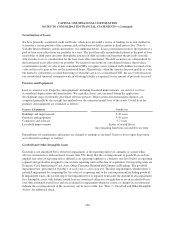Capital One 2013 Annual Report Download - page 158
Download and view the complete annual report
Please find page 158 of the 2013 Capital One annual report below. You can navigate through the pages in the report by either clicking on the pages listed below, or by using the keyword search tool below to find specific information within the annual report.CAPITAL ONE FINANCIAL CORPORATION
NOTES TO CONSOLIDATED FINANCIAL STATEMENTS—(Continued)
(other than the HSBC Bank USA, National Association consumer credit card program and certain other retained
assets and liabilities) (the “2012 U.S. card acquisition). The 2012 U.S. card acquisition included (i) the
acquisition of HSBC’s U.S. Credit Card portfolio, (ii) its on-going private label and co-branded partnerships, and
(iii) other assets, including infrastructure and capabilities. At closing, we acquired approximately 27 million new
active accounts, approximately $27.8 billion in outstanding credit card receivables designated as held for
investment (“HFI”) and approximately $327 million in other net assets.
Basis of Presentation and Use of Estimates
The accompanying consolidated financial statements have been prepared in accordance with generally accepted
accounting principles in the U.S. The preparation of financial statements in conformity with generally accepted
accounting principles (“U.S. GAAP”) requires management to make estimates and assumptions that affect the
amounts reported in the consolidated financial statements and related disclosures. These estimates are based on
information available as of the date of the consolidated financial statements. While management makes its best
judgment, actual amounts or results could differ from these estimates. Certain prior period amounts have been
reclassified to conform to the current period presentation.
Principles of Consolidation
The consolidated financial statements include the accounts of Capital One Financial Corporation and all other
entities in which we have a controlling financial interest. We determine whether we have a controlling financial
interest in an entity by first evaluating whether the entity is a voting interest entity or a Variable Interest Entity
(“VIE”). All significant intercompany account balances and transactions have been eliminated.
Voting Interest Entities
Voting interest entities are entities that have sufficient equity and provide the equity investors voting rights that
give them the power to make significant decisions relating to the entity’s operations. Since a controlling financial
interest in an entity is typically obtained through ownership of a majority voting interest, we consolidate our
majority-owned subsidiaries and other voting interest entities in which we hold, directly or indirectly, more than
50% of the voting rights or where we exercise control through other contractual rights.
Investments in entities where we do not have a controlling financial interest but we have significant influence
over the entity’s financial and operating decisions (generally defined as owning a voting interest of 20% to 50%)
are accounted for under the equity method. If we own less than 20% of a voting interest entity, we generally
carry the investment at cost, except marketable equity securities, which we carry at fair value with changes in fair
value included in accumulated other comprehensive income. We typically report investments accounted for
under the equity or cost method in other assets on our consolidated balance sheets, and include our share of
income or loss on equity method investments and dividends on cost method investments in other non-interest
income in our consolidated statements of income.
Variable Interest Entities
VIEs are entities that, by design, either (1) lack sufficient equity to permit the entity to finance its activities
without additional subordinated financial support from other parties, or (2) have equity investors that do not have
the ability to make significant decisions relating to the entity’s operations through voting rights, or do not have
the obligation to absorb the expected losses, or do not have the right to receive the residual returns of the entity.
The entity that has a controlling financial interest in a VIE is referred to as the primary beneficiary and is
required to consolidate the VIE.
138



